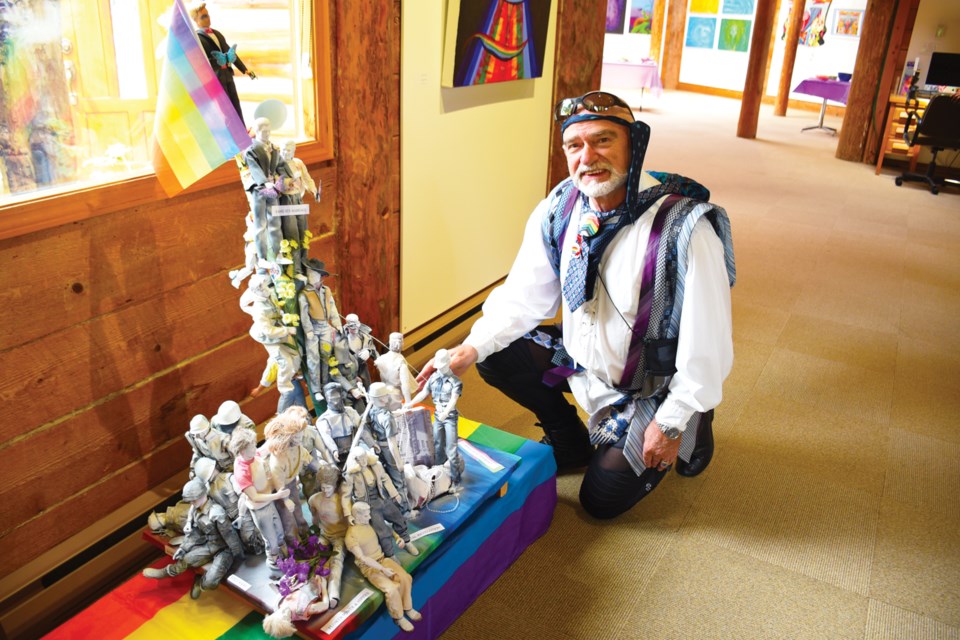Most art exhibitions are planned well in advance, and the new show at Sechelt’s Sunshine Coast Arts Centre, titled All That We Are, is no exception. But the participants took their deliberations on the Pride Month exhibit’s theme especially seriously.
“This show is a year-long meditation on identity, community, and the power of creative expression, especially in the face of adversity,” journalist and curator Anna Nobile said at the exhibition’s opening reception June 2.
Nobile noted that this year marks the 50th anniversary of the decriminalization of homosexuality in Canada. It’s also the 50th anniversary of the Stonewall riots in New York City, a series of sometimes violent protests in reaction to a gratuitous police raid on the Stonewall Inn, a gay hangout, in the summer of 1969. The protests are considered the beginning of the gay liberation movement in the U.S.
“Things have changed in the past 50 years, things have improved,” Nobile said. “But, in the current political climate globally, we need to remain vigilant; we need to remain visible and we need to continue the work that we do to connect communities and to build bridges so we can all work together to be all that we are.”
Five Sunshine Coast artists have contributed to the show at the Centre’s Doris Crowston Gallery: Denise Brown, Marina Crawford, Colin Curtis, Kath Neun, and Fiona Wilde, along with Powell River artist Rabideye. Many of the works are notable for their craft, and many don’t portray sexual identity in any obvious way, such as Kath Neun’s sensual, feathery inks, and Fiona Wilde’s acrylic goddess paintings. But a number of pieces do speak directly of sexuality.
Photographer Marina Craw-ford offers three impressive mixed-media pieces, including a large, wooden rainbow flag on which she’s placed 90 ceramic tiles, each with a specific gay-positive, social-media message. Crawford said she has not always been overtly political but that preparing her works for the show “brought out the activist in me, and I’m happy about that.”
Colin Curtis’s Emerging from Chaos uses two dozen painted Ken dolls to tell his life story as a parallel to gay struggles and liberation. An upward spiral of dolls is topped by one in a tuxedo.
“If you ascend to there, you get to be a radical fairy, which I am,” Curtis noted.
Denise Brown has about a dozen paintings in the exhibition, and also put together the installation, Project Brick. Working with local queer youth, she gave each wooden “bricks,” on which they inscribed messages of sympathy and defiance. The bricks represent the clay type that were occasionally thrown in anger during the Stonewall protests in 1969.
Brown is also showing a series of fine watercolours, including Free Spirits, which came out of research she did which revealed that in the European late Middle Ages, gay people and others considered abnormal would be rounded up daily and confined to public, street-level jail cells, called “idiot cages.” Despite the cruelty of the situation, the rainbow-coloured figures in the painting seem to be dancing. “You can only cage a body,” Brown said.
All That We Are runs until June 30.



